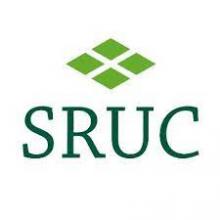Abstract
Approximately a third of all annual greenhouse gas emissions globally are directly or indirectly associated with the food system, and over a half of these are linked to livestock production. In temperate oceanic regions, such as the UK, most meat and dairy is produced in extensive systems based on pasture. There is much interest in the extent to which such grassland may be able to sequester and store more carbon to partially or completely mitigate other greenhouse gas emissions in the system. However, answering this question is difficult due to context-specificity and a complex and sometimes inconsistent evidence base. This paper describes a project that set out to summarize the natural science evidence base relevant to grassland management, grazing livestock and soil carbon storage potential in as policy-neutral terms as possible. It is based on expert appraisal of a systematically assembled evidence base, followed by a wide stakeholders engagement. A series of evidence statements (in the appendix of this paper) are listed and categorized according to the nature of the underlying information, and an annotated bibliography is provided in the electronic supplementary material.
Jordon MWet al. 2024A restatement of the natural science evidencebase concerning grassland management,grazing livestock and soil carbon storage.Proc. R. Soc. B291: 20232669.https://doi.org/10.1098/rspb.2023.2669
Download the PDF Below.



